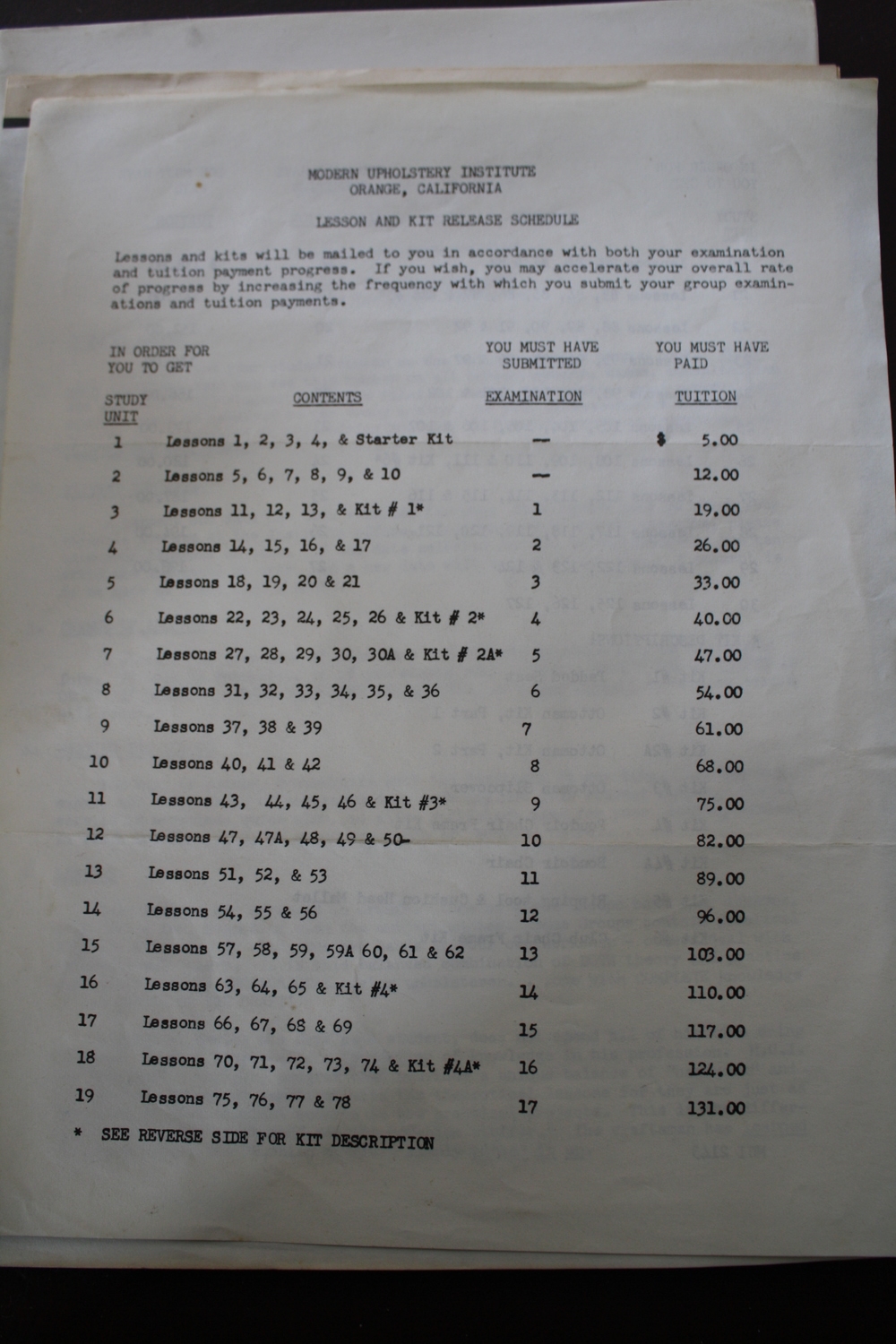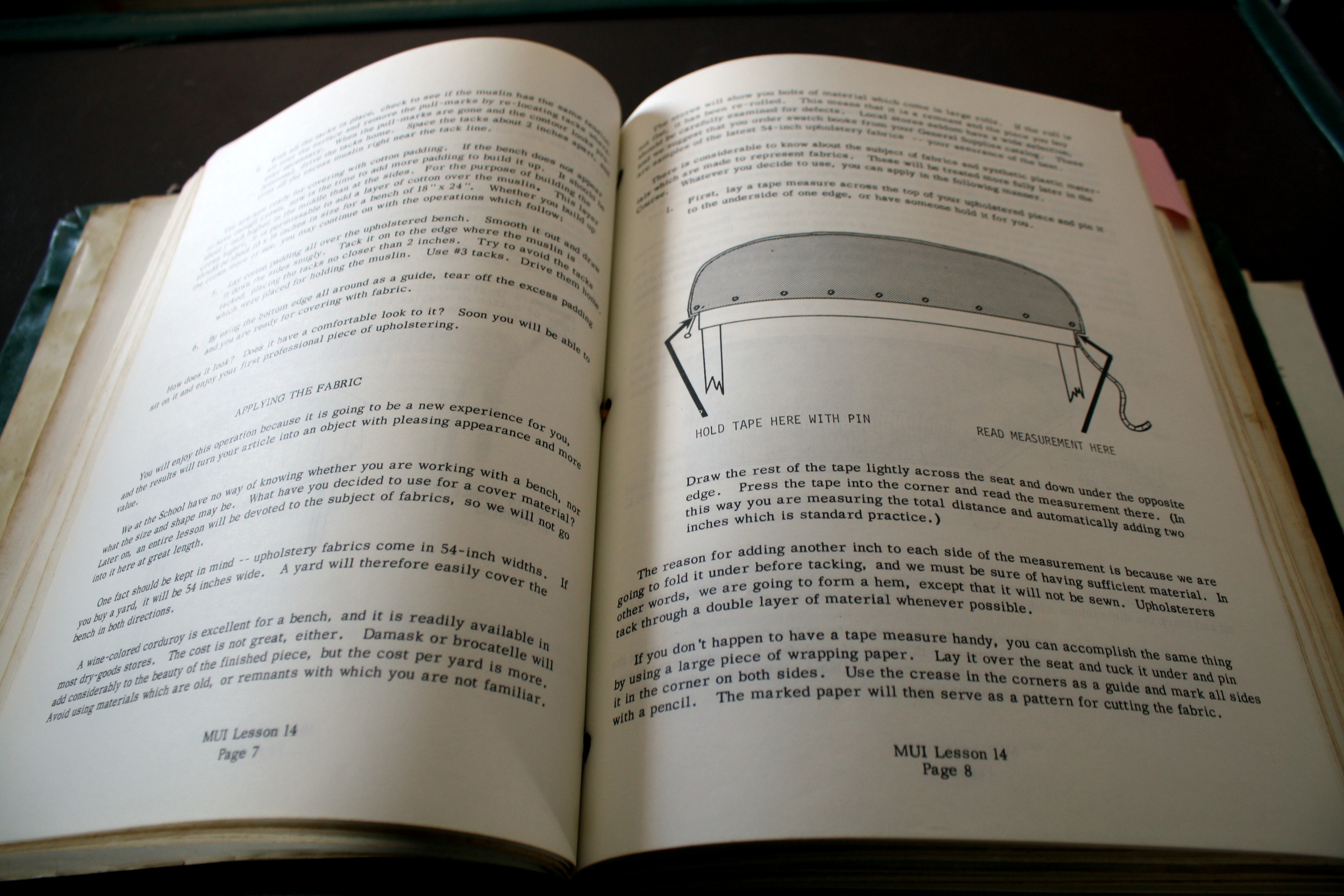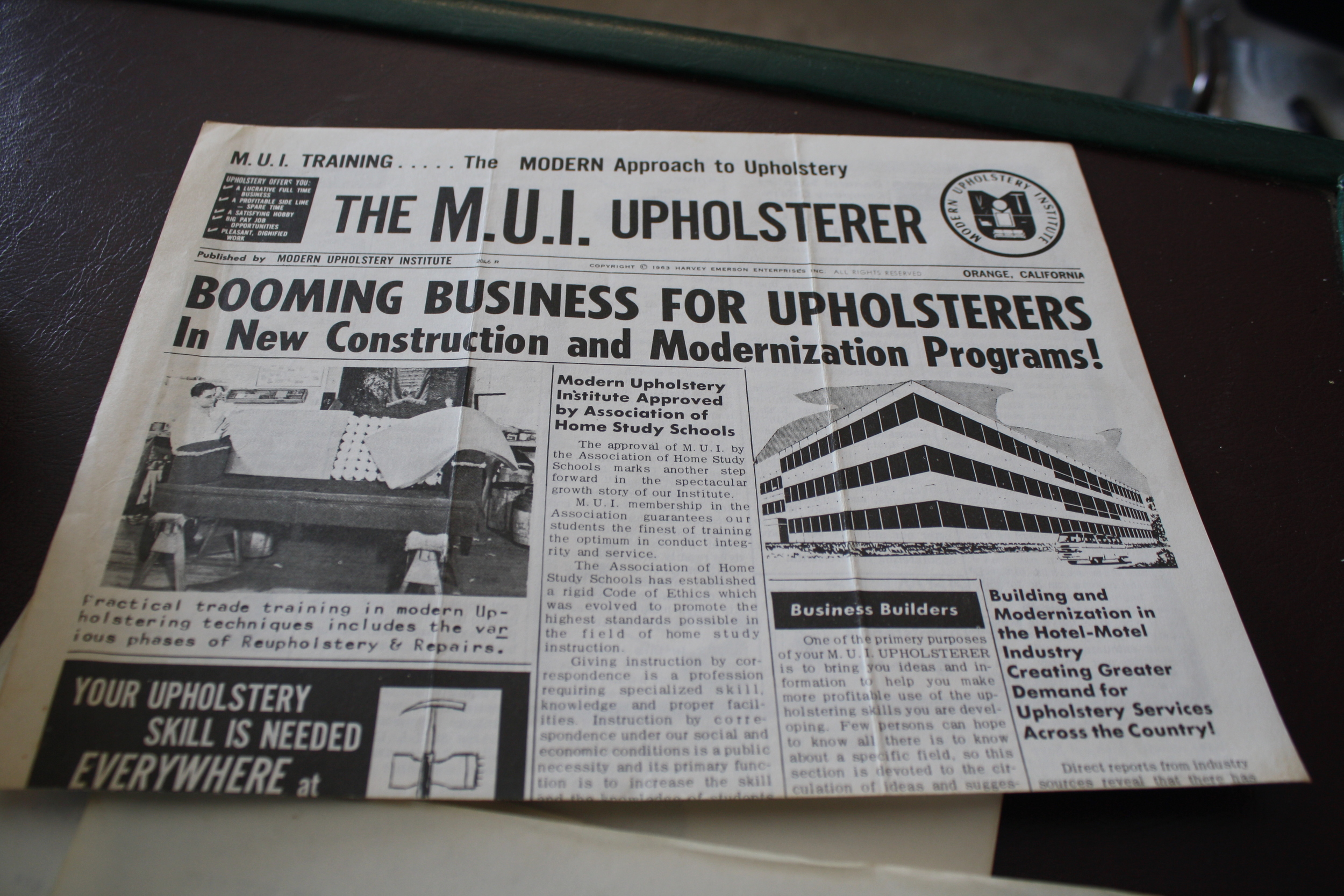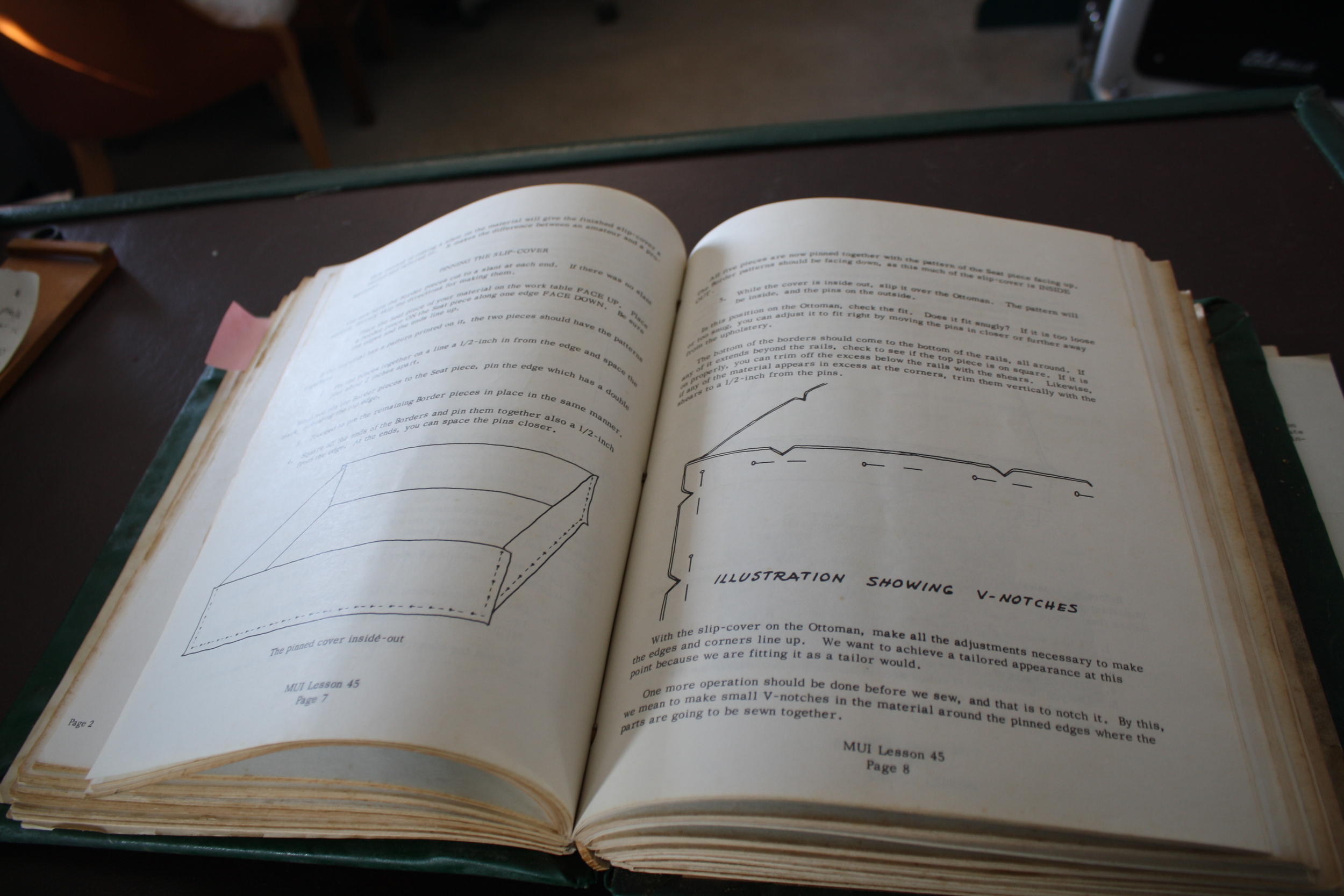As a newcomer to the upholstery trade, I have had the great luxury of getting to know folks who’ve been in the business for about as long as I’ve been alive. As many of these upholsterers are starting to slow down their business and ease into retirement, I wanted to learn more about their experiences, thoughts on the trade, and their advice for a burgeoning upholsterer such as myself before they decide to lay down the staple gun for good.
For my first installment in this series, I sat down with the man who introduced me to this business, my dad, Ray Bender.
Ray Bender of Kalona Upholstery and Supply. Find out more about Kalona Upholstery at www.kalonaupholstery.com or by calling (319) 656-3466.
Ray has been in the business for about 28 years and a desire to be self-employed was what drove his first foray into furniture upholstery. In the early 1970s he was living in rural Maryland and came across an ad in a magazine promising that the reader could ‘make money and win friends’ by mastering the art of furniture upholstery through the Modern Upholstery Institute correspondence school. Ray signed up for the course and began receiving lessons through the mail. Once he completed a lesson, he would take a test and mail in his answers and then receive the next. Tools and materials for each lesson were provided by the Institute and he gradually worked his way from covering a book to fully upholstering various types of furniture. It took Ray about 1.5 years from when he started the course to when he did his first paying job for a customer. He sold off the business after a move to Iowa and spent several years in the auto body business, but came back to furniture upholstery and opened Kalona Upholstery and Supply in the 90s.
While a lot has changed in the world since the 1970s, in Ray’s view, the trade of furniture upholstery has remained largely the same. Though some of the furniture that comes through the shop is now made of cheaper materials (such as plywood, chipboard and poor quality foam), the higher-end furniture is still made in the same tradition as in the 1970s (or even a hundred years ago), utilizing solid wood frames, and 8-way tied coil springs. He says that, “if there’s any huge change from years ago, its that there are foam cushions now as opposed to spring cushions . . but I think the basics are the same and have been the same for a long time.”
Looking towards the future, though the manufacturing process has changed due to new technologies, Ray doesn't anticipate much changing in the furniture reupholstery trade. In fact, this is one of the things that first attracted him to upholstery; he “knew that [he’d] always know how to do it, because the old stuff was out there, and the new stuff still used the same methods.” In response to my queries on the so-called ‘culture of disposability’ and whether that poses a threat to the future of the trade, Ray wasn’t too worried, saying that in his experience, there will always be a segment of the population who want quality items that will last.
Ray at work in his shop.
Ray has given me a lot of good advice over the past year regarding the craft of furniture upholstery as well as running a business. When pressed for just one key nugget of advice he’d give to a new upholsterer, he said that “as far as the actual work goes, pay attention to the details, because thats what separates the good from the average.” For Ray, providing custom upholstery that is crafted by hand means taking the time to make a finished product that, when possible, is better than what was done at the factory.
At the end of our interview, Ray shared with me a saying that has inspired him, and now is inspiring me:
If you work with your hands, you’re a laborer.
If you work with your hands and your head, you’re a craftsman.
If you work with your hands, your head, and your heart, you’re an artist.
Says Ray, “I try to be an artist.”







